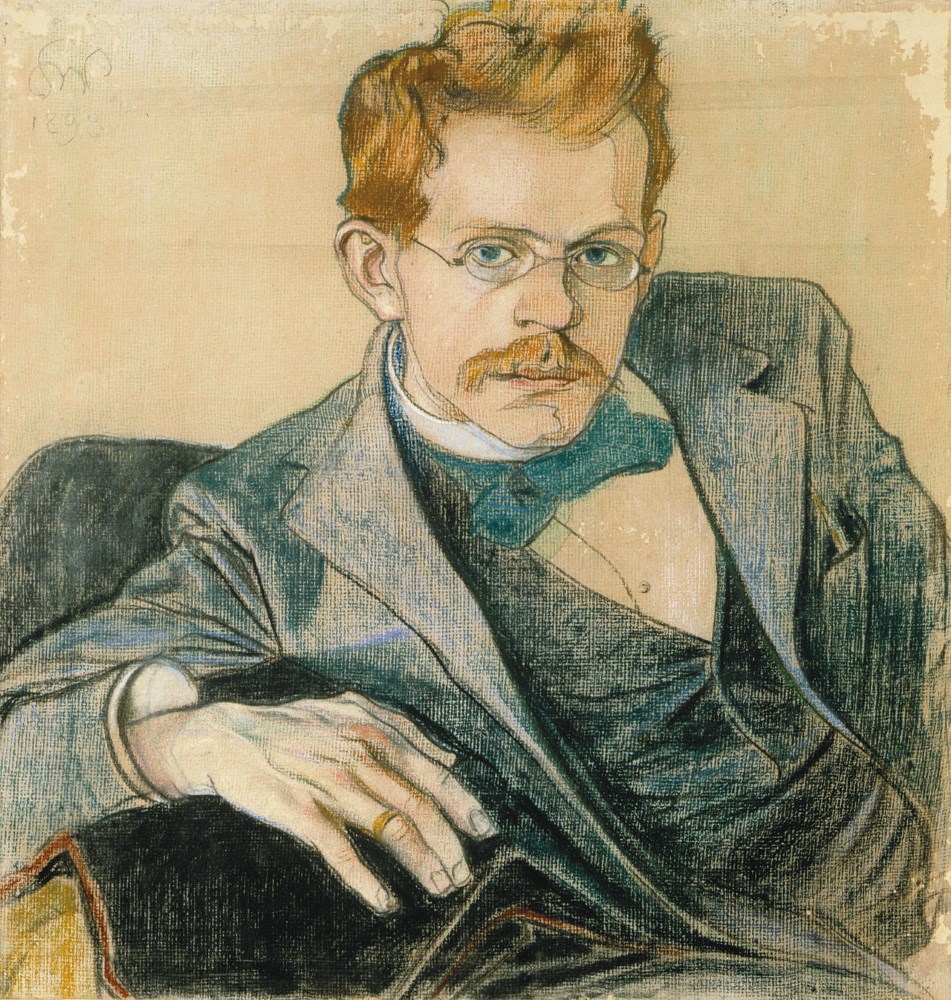Description:
A great influence on the formation of Stanisław Wyspiański’s (1869-1907) original and recognizable style was his studies at Jan Matejko’s in Krakow, his travels and his several-year-stay in Paris with his friend Józef Mehoffer. The works of Van Gogh, Gauguin and Toulouse Lautrec had a particularly strong impression on him. Sensitized to oil paints, he began to use mainly pastels. In addition to painting, he was also engaged in graphics, he made decorative polychromes, designed stained glass windows, theatrical stagings, interiors and furniture, wrote poetry and dramas. His art, which fits into the program of Young Poland, is referred to as symbolic, expressionist and secessionist.
Description of the painting:
Stanisław Wyspiański, in his relatively short, thirteen-year artistic activity, dealt with many forms of art. Starting from drawing, through painting, graphics, decorative polychromy, interior and furniture design, theatrical staging, monumental stained glass and ending with poetry and drama. He fit perfectly into his time and although today we can describe his art with words: secession, symbolism, expressionism, modernism, and Wyspiański as a representative of Young Poland, he himself never liked to be pigeonholed, defined within such systematizations.
In his artistic search, the artist was influenced by his studies with Jan Matejko in Kraków, his travels and his several-year stay in Paris, where he shared a studio with his friend Józef Mehoffer. There, Van Gogh, Gauguin and Toulouse Lautrec made a special impression on him. Gradually, he developed his own, original and recognizable style, which today allows us to immediately recognize his works. The distinguishing mark of Wyspiański is pastel, to which he decided, among other things, due to an allergy to oil paints.
Wyspiański was constantly creating self-portraits and portraits, between his great projects. His models were often children, especially his own, as well as his wife and friends, among whom Józef Mehoffer occupied an important place.
“Portrait of Mehoffer” is a particularly personal portrait, because it not only depicts Wyspiański’s close friend, but also his rival in art. In the portrait, Wyspiański not only captured the likeness of his physiognomy, but also the mental state of Mehoffer. In the seemingly free, natural pose of the model, tension can be felt, which is particularly visible in the face with slightly furrowed eyebrows, concentrated gaze and tight lips.
Wyspiański believed that when drawing a portrait, one should draw not one, but three portraits that will be included in it. The first “layer” of the portrait is a correct representation of the physiognomy, the second is the recognition of the character, feelings, or in other words, the “soul” of the model. The third “layer”, the most difficult, is the self-portrait. The image of Mehoffer meets all the above conditions, conveying the mutual tension between the artists, captured in the characteristic personal style of Wyspiański, which consists of both technique, color scheme, as well as nervous line, which could almost serve the artist instead of a signature.


